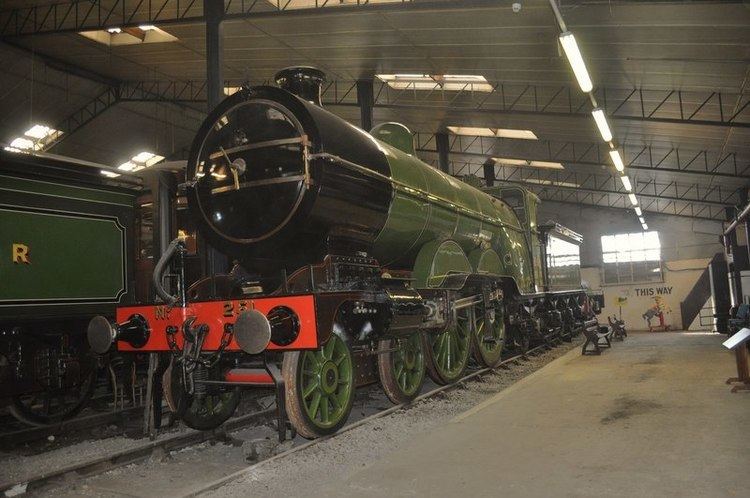Power type Steam Total produced 94 | Build date 1902–1910 | |
 | ||
The Great Northern Railway (GNR) Class C1 is a type of 4-4-2 steam locomotive. One, ex GNR 251, later LNER 2800, survives in preservation.
Contents
Development
The C1 Class, as it was known under both GNR & LNER classifications, was designed by Henry A. Ivatt as an enlarged version of what became the LNER C2 Class. The principle of the design was to produce a powerful, free-steaming engine to haul the fastest and heaviest express trains on the Great Northern. They could thus be seen as the start of the East Coast 'Big Engine' policy. None were ever named.
First engine and improvements
The first engine, No. 251, was introduced in 1902, with eighty more being built at Doncaster Works between 1904 and 1908. Although they suffered from a number of teething troubles, the Atlantics were generally very successful. They were originally fitted with slide valves, but later gained piston valves, which produced a notable improvement in performance. The Atlantics remained in front-line service for many years, sometimes being called upon to haul trains of over 500 long tons (508 t; 560 short tons).
Later years
They were eventually superseded on the heaviest trains by Gresley A1 Pacifics in the early 1920s. They continued to haul lighter expresses up until 1950, although this did include the Harrogate Pullman for a period during the 1920s and 1930s. They were often called upon to take over trains from failed Pacifics and put up some remarkable performances with loads far in excess of those they were designed to haul. One once took over the Flying Scotsman from a failed A3 at Peterborough and not only made up time but arrived early.
The last trip
Seventeen C1s made it to serve British Railways, albeit for a short time. According to The Railway Magazine, the last engine in service was BR 62822, ex GNR 294. On 26 November 1950 she hauled a train one way from Kings Cross to Doncaster to mark the end of the C1s. Among the many on board was the son of H.A. Ivatt, Mr. H.G. Ivatt who received one of the builder's plates. On display at Doncaster was pioneer sister ex GNR 251, already preserved, and a number of modern engines. The return trip to London was hauled by A1 Pacific 60123 named, suitably enough, H.A. Ivatt.
The first becomes the last, No. 251
Pioneer 251, LNER 2800, had been saved for the national collection even before the last one was withdrawn from revenue service in 1950. Restored to GNR livery, she is the only C1 to survive. She joined preserved sister GNR 990 "Henry Oakley" on two weekends of trips entitled Plant Centenarian, celebrating the 100th anniversary of the Doncaster Works. On the 20th the two engines, 990 leading, hauled the train from Kings Cross to Doncaster carrying nearly 500. Class A4 Silver Link brought the train back to London. A similar trip a week later operated from Kings Cross to Leeds with a stop at Doncaster, with the GNR veterans again hauling one leg of the trip. No. 251 steamed poorly on these trips, because the superheater had been removed although the boiler flues had not been replaced with small tubes to compensate. Further trips followed, the last being on 12 September 1954, but it was not until March 1957 that the locomotive was placed in York museum. Still part of the National Railway Museum in York, she is now at Shildon, County Durham in the National Railway Museum (May 2016)
